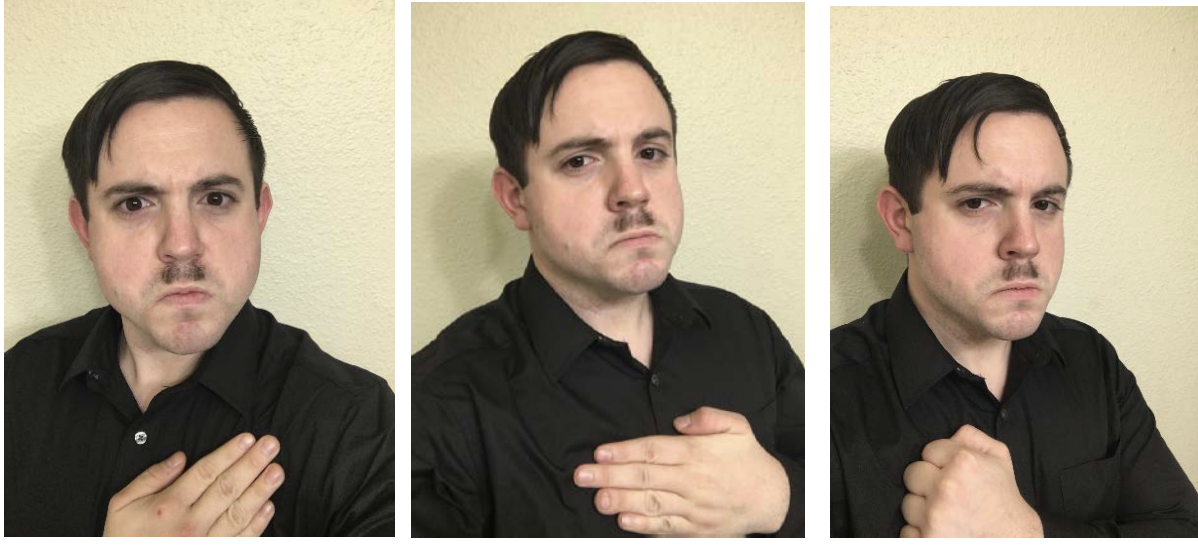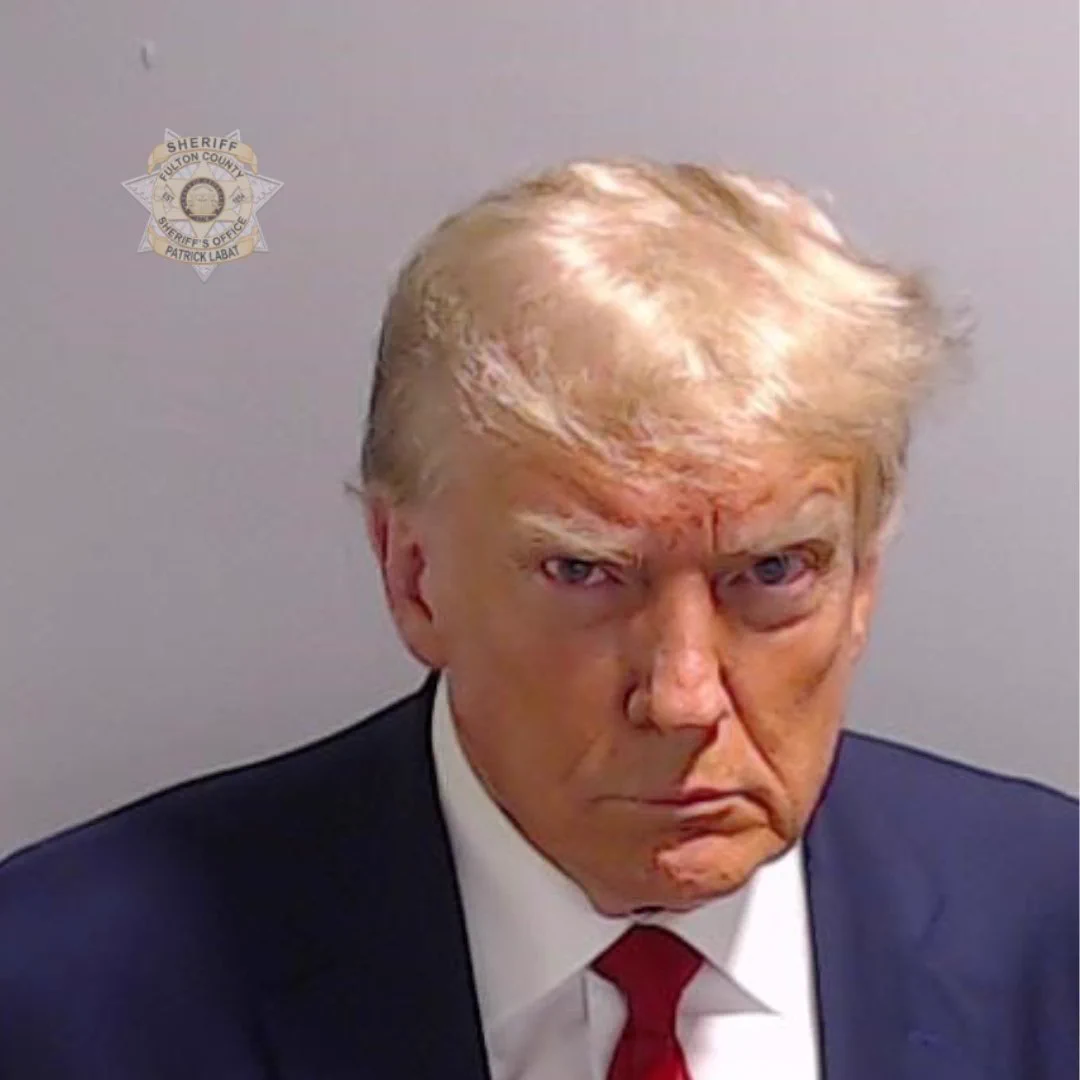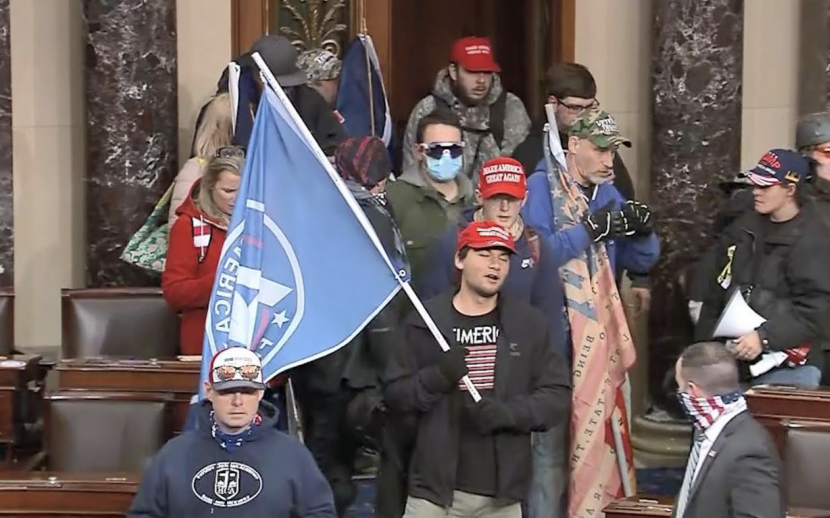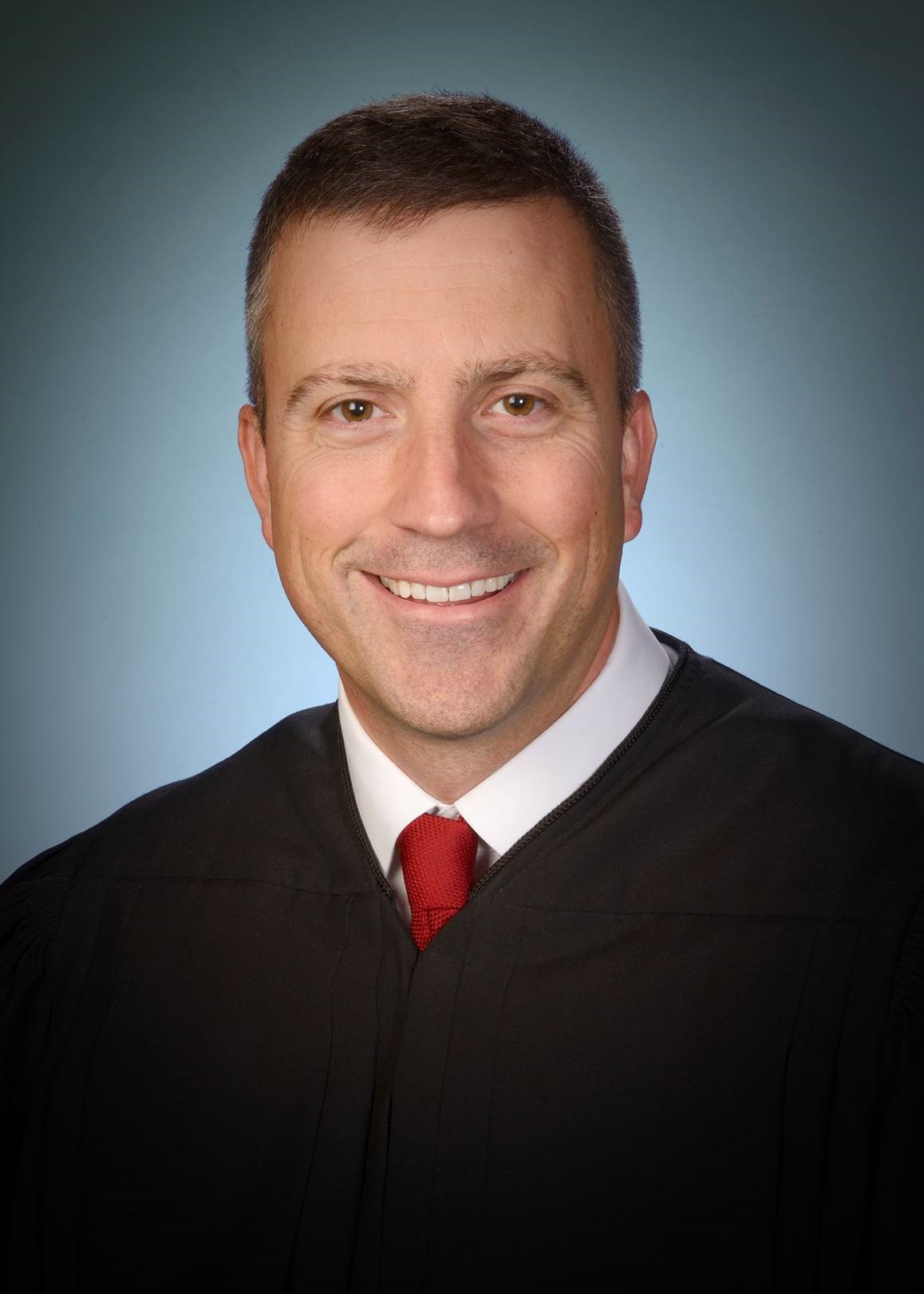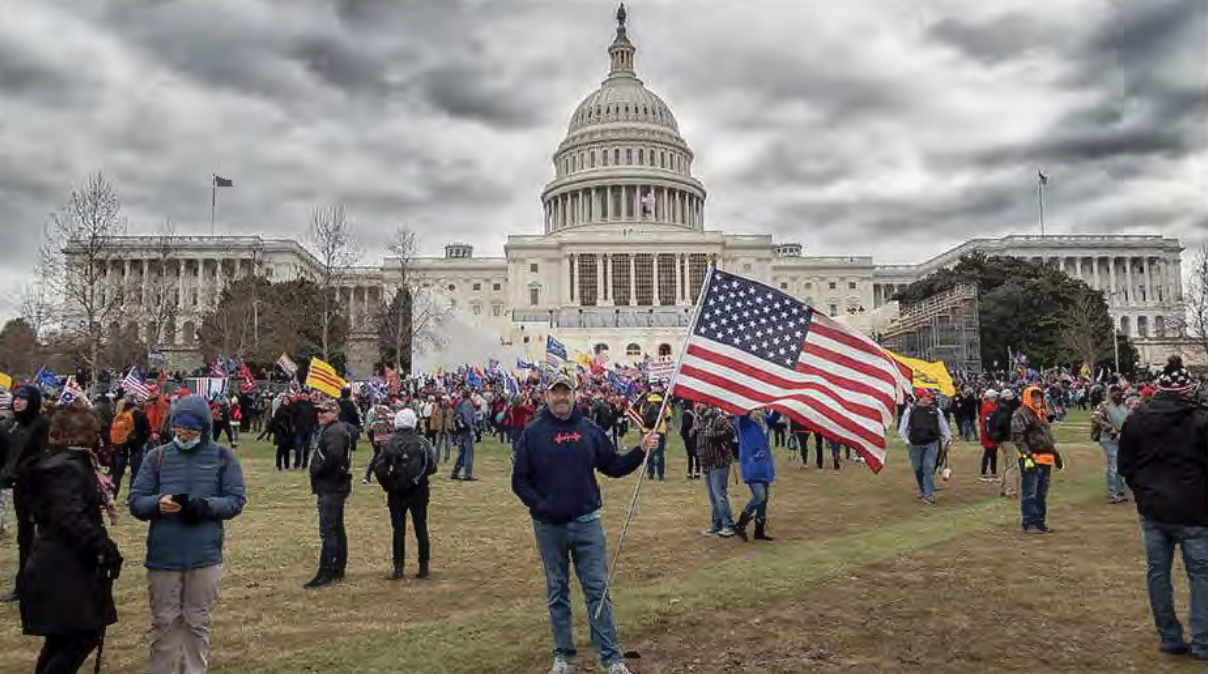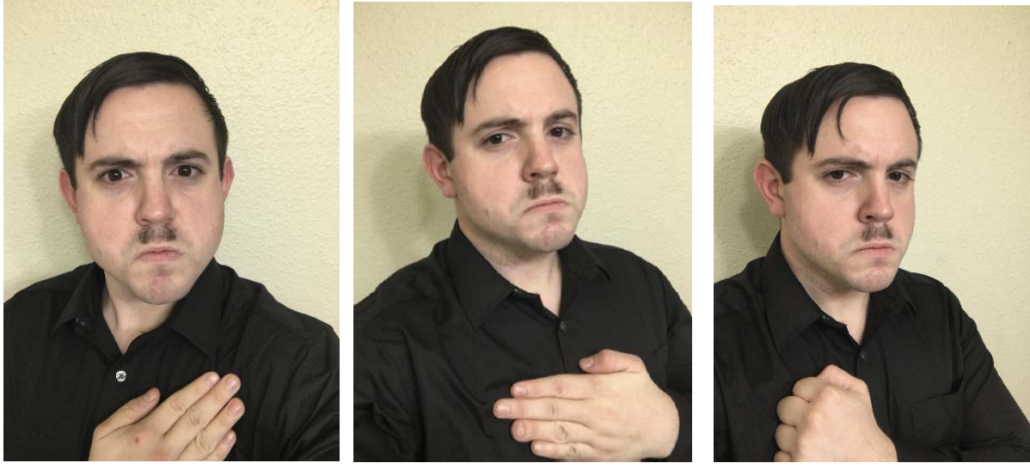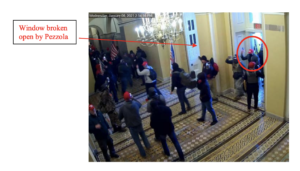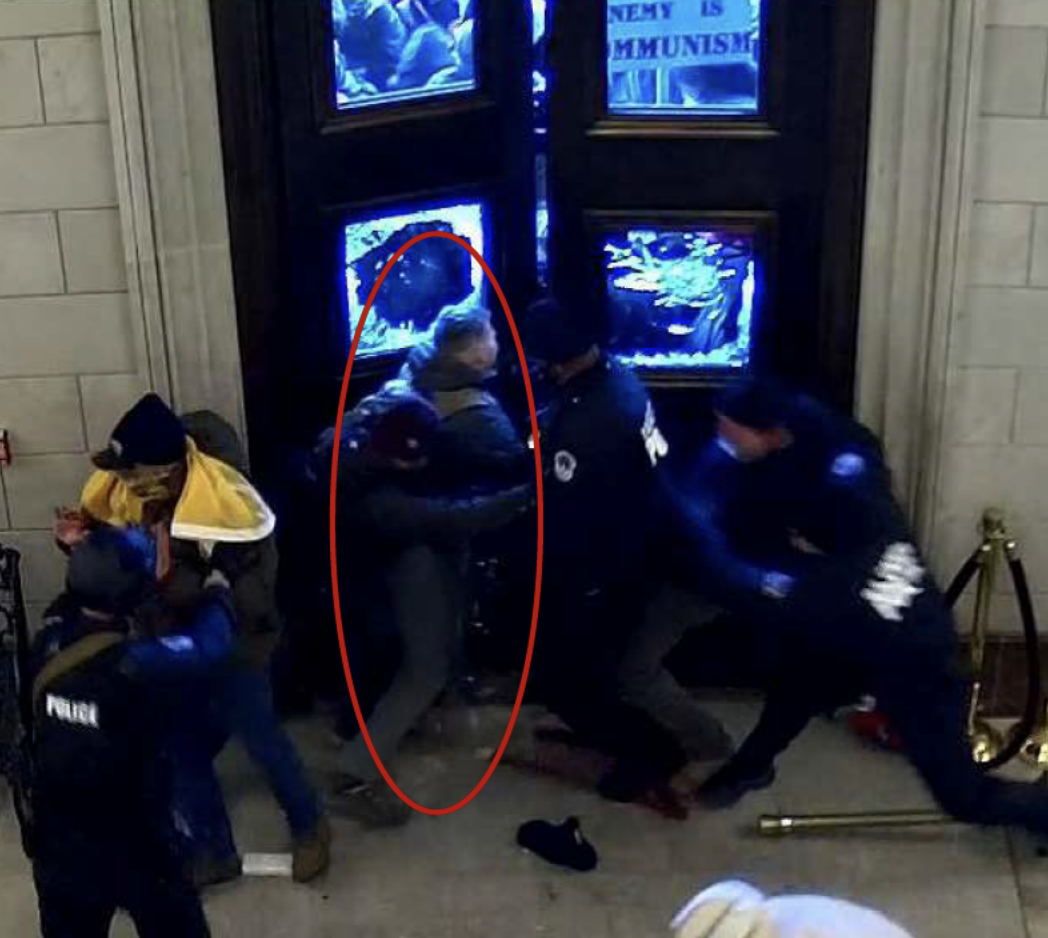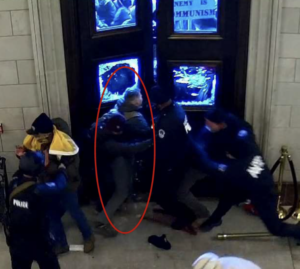Tierney Sneed had a good article yesterday summarizing how starkly some of the judges presiding over January 6 cases have described it. For example, Sneed quoted liberally from the comments Randolph Moss made in sentencing Paul Hodgkins, comments that the government and other judges are quoting frequently.
“It means that it will be harder today than it was seven months ago for the United States and our diplomats to convince other nations to pursue democracy,” Judge Randolph Moss said at a July 19 sentencing hearing. “It means that it will be harder for all of us to convince our children and our grandchildren that democracy stands as the immutable foundation of this nation. It means that we are now all fearful about the next attack in a way that we never were.”
[snip]
Moss, a nominee of President Barack Obama, said that the attack “threatened not only the security of the Capitol, but democracy itself,” as he sentenced Paul Hodgkins, a rioter who pleaded guilty to obstructing an official proceeding.
“Our elected representatives from both political parties came together that day to perform their constitutional and statutory duty to declare, in the word of the statute, the person elected president,” Moss said at the July 19 hearing. “The mob’s objective was to stop that from happening. They were prepared to break the law to prevent Congress from performing its constitutional and statutory duty. That is chilling for many reasons.”
She includes judges appointed by Democrats (in addition to Moss, Amy Berman Jackson and Beryl Howell) and Republicans (Reggie Walton and Royce Lamberth).
As someone who thinks January 6 was exceptionally dangerous, it’s comforting to hear some judges agree. But I think that, to make a case about how judges are interpreting January 6, you would need to include the statements of a judge like Trevor McFadden, as well.
Of the District Judges carrying the heavy January 6 case load, four — Carl Nichols, Dabney Friedrich, Tim Kelly, and McFadden — are Trump appointees. Unlike some of Trump’s DC Circuit appointees, they’re all serious judges, with time as prosecutors or in other DOJ roles. Trump appointees aren’t necessarily going to be more favorable for January 6 defendants. While Nichols may have burnished his right wing bonafides clerking for Clarence Thomas, for example, that means he spent a lot of time with a Justice who is generally awful for non-corporate defendants’ rights. Former public defender and Obama appointee Tanya Chutkan has already made decisions (on bail) that are more favorable to defendants than the Trump appointees, for example, and I expect that to continue (the judge presiding over the Oath Keeper conspiracy case, Amit Mehta, has also served as a public defender).
Still, as recent Republican appointees, the Trump judges are an important read and voice on this investigation. Both by disposition and record on the court, Friedrich is probably the Trumpiest judge, but thus far the most interesting case she has been assigned is that of Guy Reffitt, the III Percenter who threatened his kids if they revealed his role in the riot; in that case, she approved an order allowing prosecutors to use his face to open a laptop with pictures from the insurrection. Nichols has a bunch of cases, such as the Pollocks or former Green Beret Jeffrey McKellop, that may get interesting down the road, but thus far his most active cases have involved presiding over the plea deals of a group of people arrested on trespass charges on the day of the attack. Tim Kelly is presiding over the bulk of the Proud Boy cases, which by itself gives him a pretty full docket (but is also why DOJ really fucked up by treating Ethan Nordean’s invocation of the Kavanaugh protests so blithely); his decisions thus far have been totally fair. The decisions of Trevor McFadden, who is presiding over the omnibus Tunnel assault case, have also been fair.
I think McFadden’s statements should be included in any read of what these judges think of January 6 because he has pulled a number of the ones that, because the defendants’ political speech has been implicated in the cases against them, will provide an early read about how a Republican with solid political ties will view the balancing of political speech and threat posed by January 6.
In addition to the Hunter and Kevin Seefried prosecution (the latter of whom was pictured carrying a Confederate flag through the Capitol), McFadden is presiding over the prosecutions of American Firster Christian Secor, Cowboys for Trump founder Couy Griffin, and Neo-Nazi Timothy Hale-Cusanelli.
In these cases, McFadden has expressed a fair amount of nuance in his views as he has presided over some genuinely difficult decisions.
He did take the way Hale-Cusanelli expressed his bigotry into account when he decided to hold him without bail (which was genuinely one of the most difficult detention decisions, in my opinion, and I was leaning towards release before McFadden made the decision), but in significant part because he may have acted on those views in the past and because his promises of action were alarming and intimidating his colleagues.
Having said all of that, we don’t typically penalize people for what they say or think. I think for purposes of my analysis, I need to — I’m trying to figure out whether this well-documented history of violent and racist language does suggest that the defendant poses a danger to the community.
[snip]
I also note the government’s evidence that the defendant appears to have surrounded himself, to a certain extent anyway, with people who have encouraged this behavior and people who may even agree with him. And I agree with the government’s concern regarding potential escalation of violence at this point given all that has occurred. And I am concerned for the safety of the confidential human source. I think given all of the facts here in the government’s motion, I mention it is pretty obvious to the defendant anyway who this person is. And I am concerned given all of the defendant[‘]s — all of the things he said in the past about committing violence against those who he feels are pitted against him. And given the sum evidence that the defendant has been willing to put these thoughts into action in the past, I think I do have a duty to protect that confidential source.
McFadden did, however, release someone with similarly repugnant views, Secor, even though Secor had been arming himself, in part because Secor had third party custodians — his parents — willing to vouch for him and put up a $200,000 bond. McFadden seems to be seeking to separate out hateful speech from where that speech turns violent and, if nothing else, that struggle deserves close attention.
But he’s also not viewing DOJ’s response to January 6 as driven predominantly by First Amendment issues. In a decision rejecting Griffin’s attempt to throw out one of the trespassing charges DOJ has used — which Griffin, because he did not enter the Capitol, was uniquely situated to challenge — McFadden dismissed Griffin’s claims of political discrimination.
The Government moved to detain Griffin before trial. It described Griffin’s political views as “inflammatory, racist, and at least borderline threatening advocacy.” Gov’t’s Mem. in Supp. of Pretrial Detention at 2, ECF No. 3. The Government also highlighted the gun rights advocacy of Cowboys for Trump, as well as allegedly violent statements made by Griffin.
[snip]
Finally, Griffin complains of discriminatory prosecution. He contends that he was targeted and “selectively charged . . . because the government loathed him and his politics.” Def.’s Reply at 3. “Few subjects are less adapted to judicial review than the exercise by the Executive of his discretion in deciding when and whether to institute criminal proceedings, or what precise charge shall be made, or whether to dismiss a proceeding once brought.” United States v. Fokker Servs. B.V., 818 F.3d 733, 741 (D.C. Cir. 2016) (cleaned up). So “the presumption of regularity” applies to “prosecutorial decisions and, in the absence of clear evidence to the contrary, courts presume that prosecutors have properly discharged their official duties.” Id.
Griffin comes up short on providing the “clear evidence” required for this Court to surmount the presumption of regularity—and the separation of powers. He points to “hundreds or perhaps thousands of other individuals ‘remaining’ in the same area” as him on January 6 who have not faced charges under 18 U.S.C. § 1752. Def.’s Mot. at 24. The Court hesitates to credit these unsupported numbers, especially as the Government continues to charge new individuals with offenses related to January 6. Nor is the Court concerned by the Government’s statements about Griffin when seeking to detain him pretrial; detention hearings require the Court to consider the defendant’s history and personal characteristics, as well as his potential dangerousness.
Griffin highlights the Government’s dismissal of charges under 18 U.S.C. § 1752 in “the interests of justice” in United States v. Christopher Kelly, 21-mj-128 (D.D.C. 2021). According to news reports, the Government moved to drop the charges after determining Kelly did not enter the Capitol building. See Feds move to drop charges for Capitol riot defendant, Politico, June 1, 2021, https://www.politico.com/news/2021/06/01/feds-capitol-riot-defendant-491514 (“‘Since he was not inside, in the interest of consistency in the investigation, the charges were dropped,’ the official said.”). Even so, the Government could rationally forgo federal prosecution as to most trespassers while deciding that Griffin’s leadership role in the crowd, position as an elected official, and more blatant conduct at the scene merited him different treatment. Not all differences amount to discrimination. In any event, presumably Kelly and the other uncharged protestors surrounding Griffin on the Capitol steps share his “politics,” Def.’s Reply at 3, complicating his complaint of bias here.
Griffin also points to the numerous uncharged protestors who broke through USCP barricades to occupy the Capitol steps on the eve of Justice Kavanaugh’s Senate confirmation vote. See Def.’s Notice at 2, ECF No. 39; see also Kavanaugh Protesters Ignore Capitol Barricades Ahead of Saturday Vote, Roll Call, Oct. 6, 2019, https://www.rollcall.com/2018/10/06/kavanaugh-protesters-ignore-capitol-barricades-ahead-ofsaturday-vote/. Disparate charging decisions in similar circumstances may be relevant at sentencing. Cf. 18 U.S.C. 3553(a)(c) (“the need to avoid unwarranted sentence disparities among defendants with similar records who have been found guilty of similar conduct”). But this is not a basis to dismiss the charges. [My emphasis]
McFadden based his decision on this point in part on separation of powers (the basis for some of his decisions that have been deemed pro-Trump) and presumption of regularity, as well as basic facts. He deemed reasonable the possibility that prosecutors viewed Griffin’s leadership role to be more important to prosecute. He suggested he might sentence Griffin (if he were found guilty) leniently based on a comparison with similarly situated protestors against Kavanugh. But he also based his decision on the notion that Griffin’s threats of violence (raised in a detention challenge conducted before Michael Sherwin departed) could pose a genuine concern to the government.
McFadden is not treating this investigation as a witch hunt against people with right wing views.
But at the same time, McFadden has deviated from his colleagues’ more alarmist language to refer to January 6. At least twice in hearings (including on this Griffin challenge), McFadden admonished an AUSA who referred to January 6 as an insurrection. Have you charged anyone with insurrection, McFadden rightly asked. In a court room, these are not empty terms. They are also names of crimes. And DOJ needs to be careful not to accuse these defendants of crimes that — for whatever reason — they haven’t charged.
It’s not that McFadden thinks January 6 was not serious. In the same Hale-Cusanelli hearing, he described, “Obviously, the January 6th riot was a serious and sui generis threat to our country’s body politic.” But thus far (he has not presided over any of the six cases that have been sentenced yet), he has adopted a more moderate tone in discussing the event.
It’s true that, for the moment, some District Court Judges will frame how we think of January 6. In Munchel, the DC Circuit, too, described January 6 in grave terms (albeit in a passage of Robert Wilkins’ majority opinion not joined by Greg Katsas).
It cannot be gainsaid that the violent breach of the Capitol on January 6 was a grave danger to our democracy, and that those who participated could rightly be subject to detention to safeguard the community. Cf. Salerno, 481 U.S. at 748 (“[I]n times of war or insurrection, when society’s interest is at its peak, the Government may detain individuals whom the government believes to be dangerous.” (citations omitted)).
But ultimately, the six Republican appointees on the Supreme Court will have their say about what this event was — at least about whether hundreds of people committed felony obstruction in trying to halt the peaceful transfer of power. And with that in mind, commentators and DOJ would do well to watch carefully for the specific aspects of January 6 that Trevor McFadden finds most troublesome.

